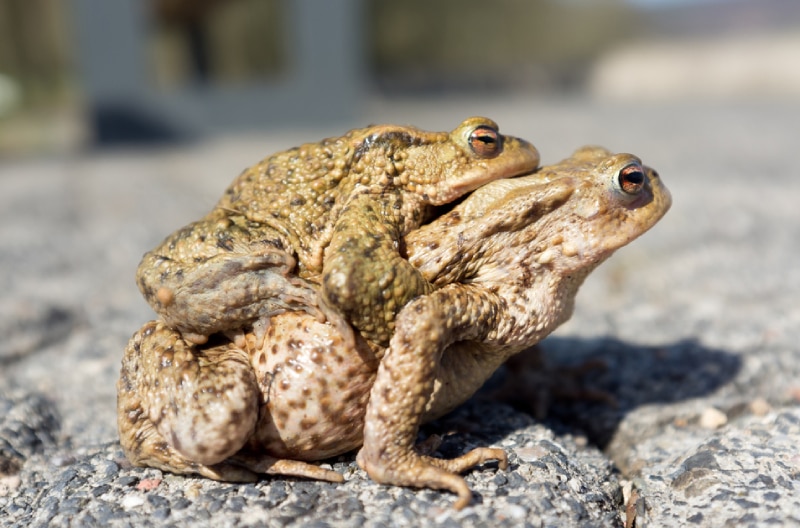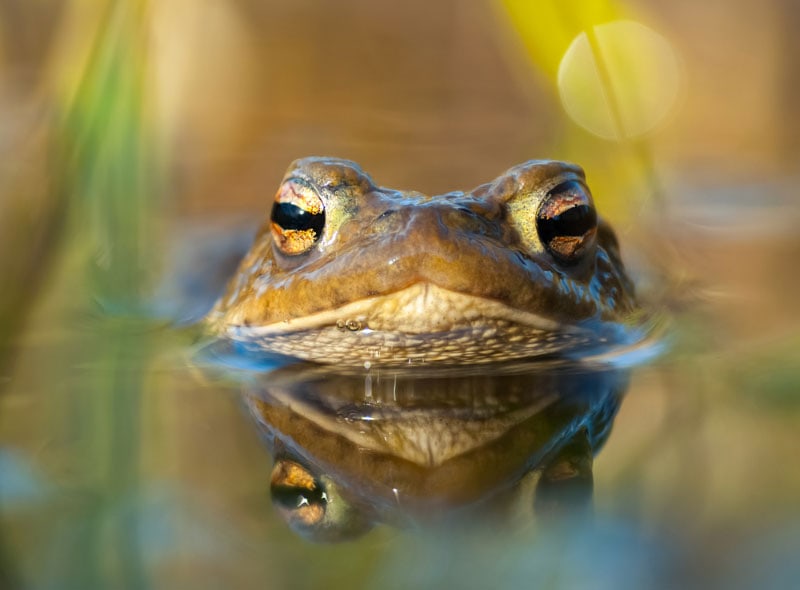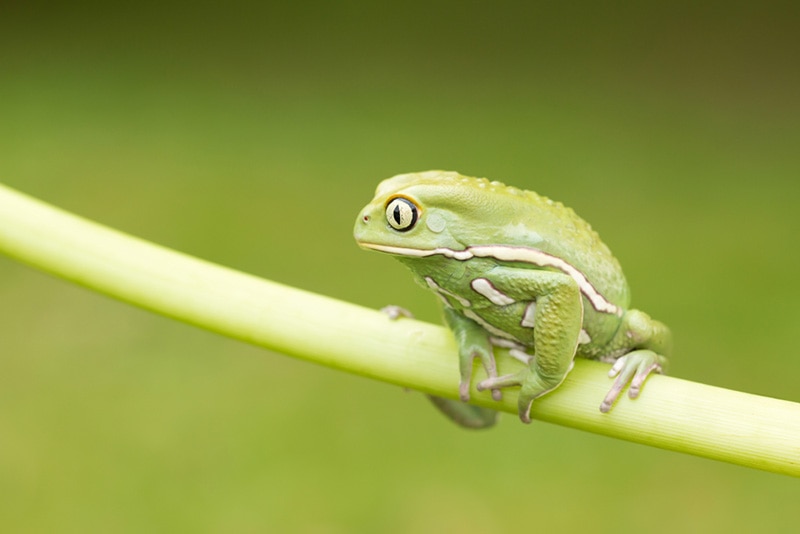How Do Toads Reproduce? Vet-Approved Reproductive Science & Info

By Misty Layne
Updated on

You probably know frogs reproduce by laying eggs in water, but have you ever wondered if toads reproduce the same way? Do toads lay eggs? After all, all toads are also frogs, so it would make sense that the reproductive process would be similar. And you’d be right if you thought they were the same!
Toads also lay eggs in water to reproduce. However, there’s a bit more to the process than that. Here’s a closer look at the toad’s reproductive cycle and how it all works. Keep reading!
The Reproductive Cycle of Toads
The reproductive cycle of toads is a bit of a process that begins with males trying to attract females between February and May (depending on the region the toad is in). How do male toads attract mates, though? Via mating calls! Male toads will get out of the water onto something like a lily pad and begin croaking away to attract a female’s attention. Male toads have varying mating calls, and females are attracted to unique characteristics in these calls, which help them locate a mate.
What happens after a female decides upon a male? This is when the true reproductive process begins. While female toads are generally a bit larger than males, males have front legs that are larger. These larger front legs allow them to more easily grasp onto the female during the mating process in a position known as amplexus. Essentially the male mounts the female and grasps onto her forearms. This action is a stimulus that eventually acts as an impetus to encourage the female to release her eggs.
But toads reproduce by external fertilization, which means fertilization is done outside the body. After the female is mounted, she will release eggs. The male then releases his sperm, which fertilize those eggs. Eggs are laid in water and, once fertilized, end up as a double string beneath the water’s surface, typically attaching to underwater vegetation. These eggs will stay like that for around 2 weeks, then hatch as tadpoles.
Thus, the reproductive process is complete!

FAQ About Toad Reproduction
You might still have a few questions about how toads reproduce, so here are some commonly asked questions and answers!
What happens if a female doesn’t pick a male to mate?
If a female is appropriately courted and doesn’t pick a male to mate with, she will simply not release her eggs until the next mating attempt (provided she locates a partner then).
Do all toads lay eggs in water to reproduce?
No, there are a few exceptions, like African toads. These toads have several breeding strategies. In some of these strategies, the tadpole stage of life is completely skipped over.
How long does it take tadpoles to become toads?
Depending on the species, it takes roughly four months for tadpoles to turn into toads. However, the final stage of a tadpole’s metamorphosis into a toad only takes about a day!
What do tadpoles feed on?
Tadpoles feed on the vegetation around them in the water, like pond algae and other plants. Adult toads however, do not feed on algae or vegetation.
Final Thoughts
Most toads reproduce similarly to frogs, laying eggs in the water, which then hatch into tadpoles. The process begins with a male toad’s mating call. When a female is attracted to the mating call, she will choose the male and begin the process of external fertilization. Once eggs are laid, tadpoles will hatch in a couple of weeks, but it takes a few months for them to become toads. After that, the process can begin again with the new frogs once they’ve fully reached maturity!
- See Also: Why Do Toads Pee on You? Facts & FAQ
Featured Image Credit: Sabino Parente, Shutterstock












